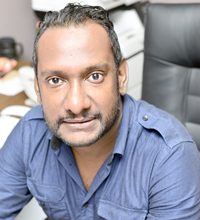Publicité
Global goals for our ‘Plundered Planet’
Par
Partager cet article
Global goals for our ‘Plundered Planet’

To know where we are going, we need to know where of we are, and right now, as we celebrate the 70 years of the UN, there’s still a lot to do to live up to our promises to improve the lives of the world’s poorest people.
This is precisely why more than 150 world leaders, including Sir Anerood Jugnauth, were in New York to adopt the new agenda for sustainable development. The 2030 Agenda comprises 17 new Sustainable Development Goals (SDGs) and 169 targets which will guide policy and funding for the next 15 years, beginning with a historic pledge to end poverty everywhere permanently.
The SDGs are replacing the eight Millennium Development Goals (MDGs), which were adopted in 2000. Those MDGs were designed to “spare no effort to free our fellow men, women and children from the abject and dehumanising conditions of extreme poverty, to which more than a billion of them are currently subjected”.
True, in macroeconomic terms, the world made some progress since then, but it is uncertain whether the quality of life for the poor has improved. The number of people now living in extreme poverty has declined by more than half, falling from 1.9 billion in 1990 to 836 millions in 2015.
There has also been tremendous impacts in the areas of access to improved sources of water, primary school enrolment and child mortality since the inception of MDGs. However, world leaders, philanthropists, multinationals and advocacy groups have diverging perspectives on the real progress made…
Even though there was divergence on the methods used, it was clear that global crises (financial, economic, food), bad governance and corruption would seriously impact the MDGs. According to economist Jeffrey Sachs, the goals were not perfect, “but they did symbolise a broad commitment to basic standards of decent living.”
Based on current realities, the UN obviously needed to recommit all governments to new policies and invest more resources in improving basic living standards. The international community had to start a high-level reflection on the unfinished business and discuss how to replace the MDGs in 2015. For instance, if the target of halving the proportion of people living in extreme poverty was met, it is not much fun being in the other half — the so-called “bottom billion”.
In “The Plundered Planet”, Paul Collier offers a different perspective on MDGs. He calls for greater transparency in the process of natural extraction in poor countries, especially in Sub Saharan Africa. “The value of the resources to be extracted from impoverished economies is enormous : if it translates into revenues that are well-spent it will be transformational. But the historical record of resource extraction in these societies is abysmal : money that could have delivered the MDGs instead corroded governance…”
The nexus between the resources of the world and the way they are exploited is indeed an equation worth solving for the world’s poorest. Just next to us, Madagascar remains a very sad example of a rich country with very poor people…
The new global agenda and its SDGs call for access to justice for all, for accountable, inclusive, and effective institutions at all levels, and for serious action to tackle inequalities. While MDGs targeted developing countries, SGDs are universal goals, applying to countries at all stages of development.
As the world becomes more and more interconnected, and has to address collectively global issues like Climate Change, SDGs remind us that we are all in the same boat, no matter where we stand on this planet. And in this struggle for a better world, Governments alone cannot achieve the goals without active participation from the civil society.
Publicité
Publicité
Les plus récents






